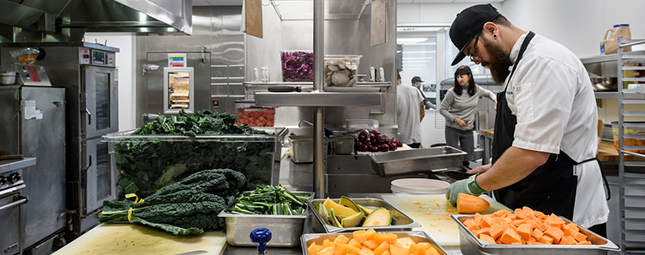
In a recent interview between Google Sustainability Officer Kate Brandt and The Financial Times, we got to hear how food waste prevention has become an impactful part of the company's global circularity and sustainability strategies. Learn how this partnership has prevented 6.6 million pounds of food waste from going to landfill.
"Back in June we set a global circular economy goal for Google to maximize the reuse of finite resources across our operations, our product, and our supply chain, and enable others to do the same," Kate explains. "There are three core principles that we look at in this work:"
- Designing out waste and pollution
- Keeping product and materials in use
- Enabling the use of safe chemistry and healthy materials
Indoctrinating food waste prevention into a corporate-wide goal like this is an important statement of commitment. It exists alongside other initiatives like carbon-neutral shipping, and energy-efficient data center operations - all individually complex undertakings that feed into a strategy that has kept Google carbon-neutral since 2007. This habit of 'moonshot' planning extends into their employee dining operation.
"At Google, we're very fortunate, we can have three meals a day at work, and snacks in between, so we really want to manage that program responsibly," explained Brandt. "One of the great opportunities we've found is designing out food waste in our kitchens."
Check out this video case study to learn more about how Leanpath powers Google's food waste prevention initiatives, and listen to the full podcast at The Financial Times for more context on how food waste fits into Google's sustainability goals."6.6 million pounds of food waste have been avoided since we started this in 2014."